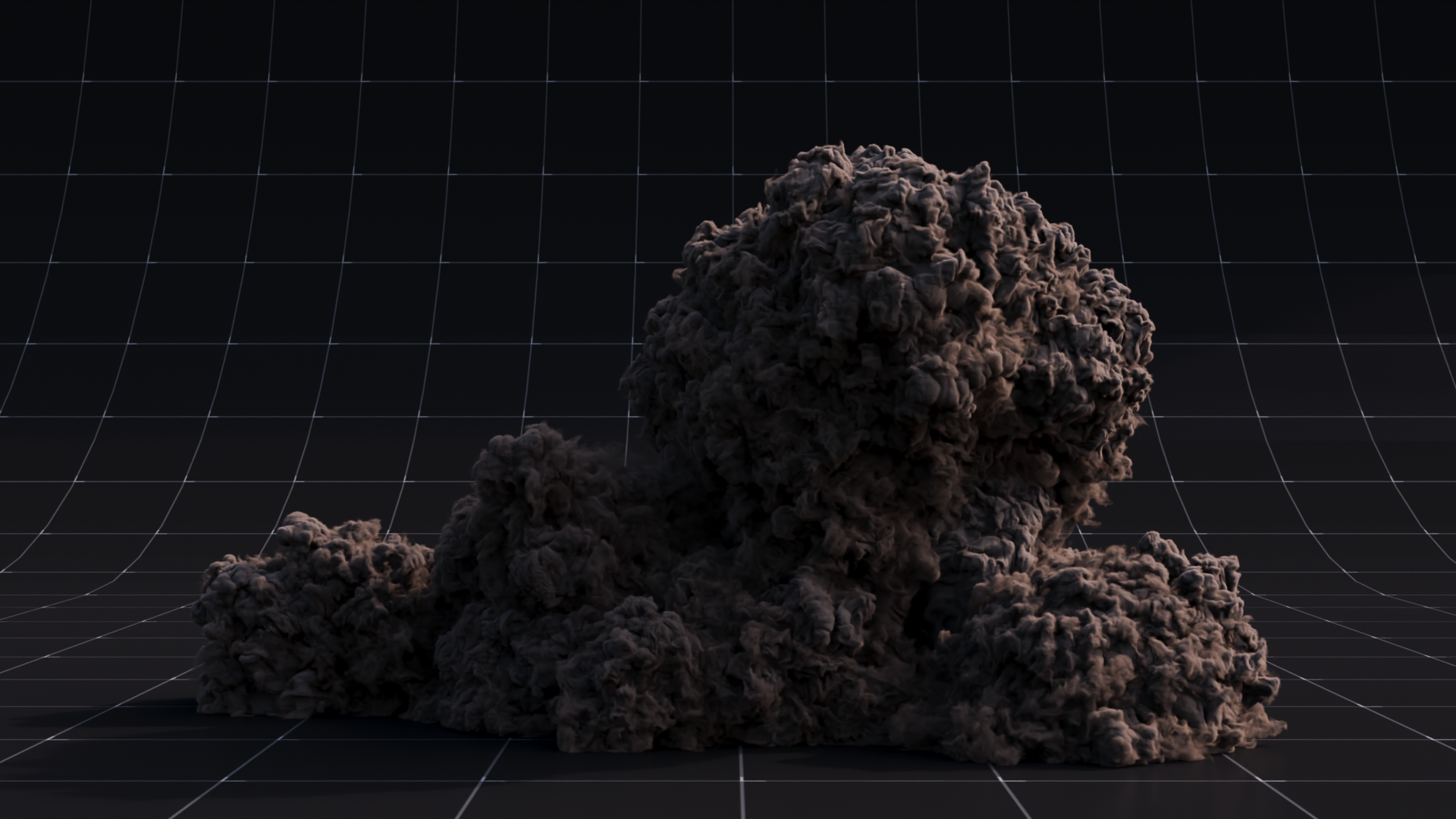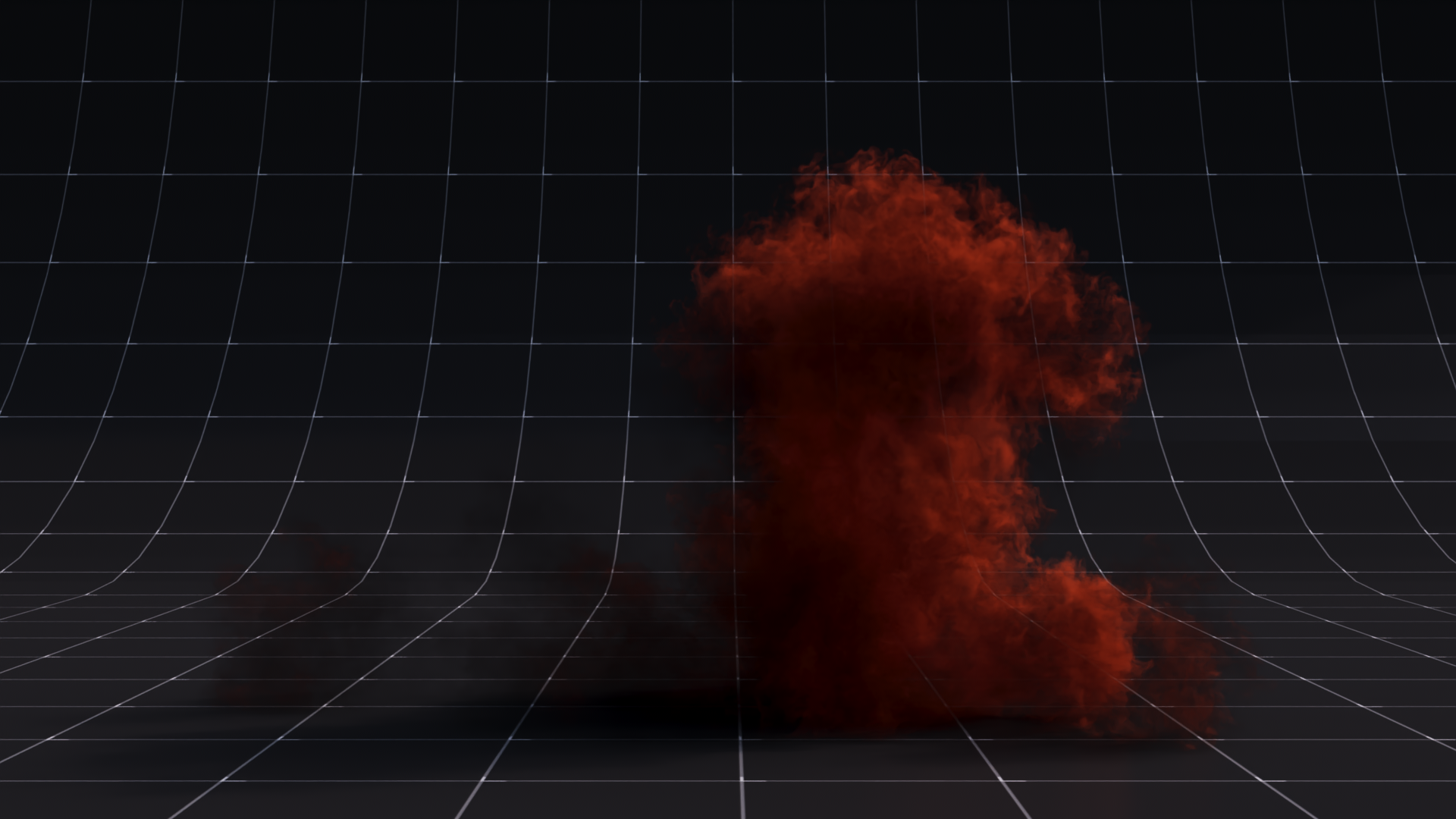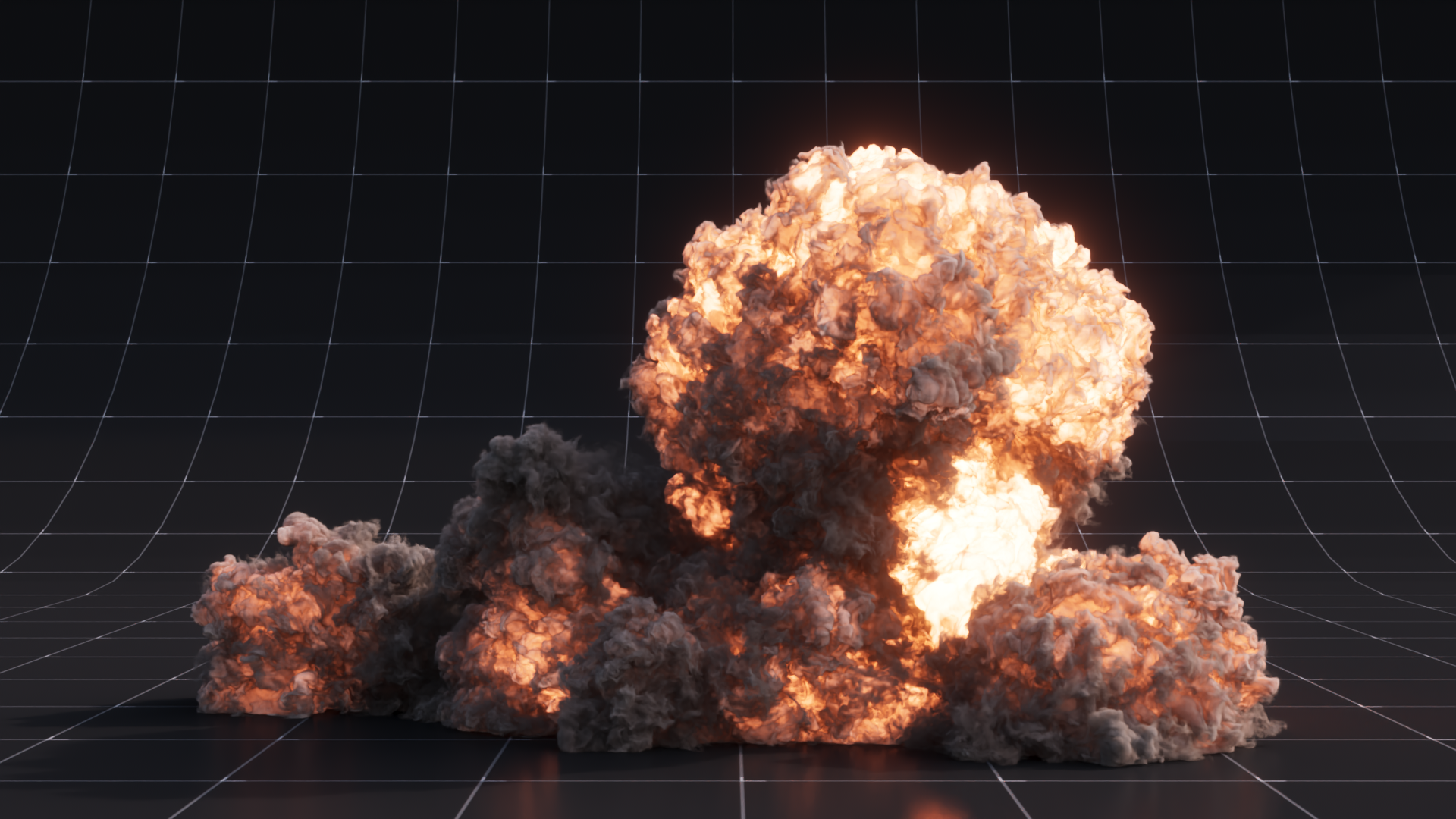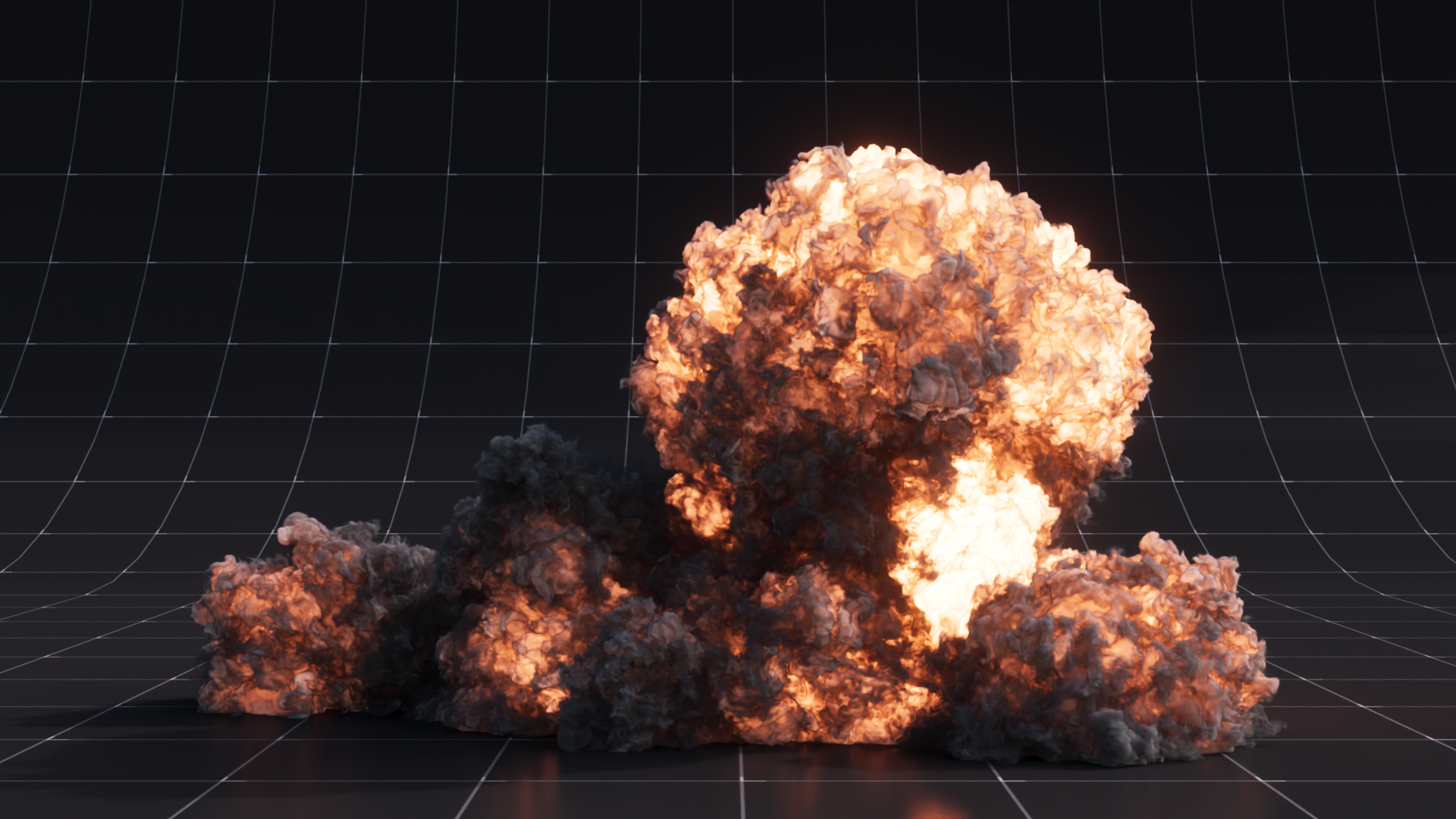Contents
Enable Smoke
Decides whether the smoke density of volume will render or not. If disabled and the Fire tab is enabled, this operation replaces the density field with the fire volume field specified in the Bindings tab instead of the smoke volume field. If both smoke and fire are disabled then the result defaults to the input volume. This does not affect data generated from Scatter
If Smoke is disabled and the Fire tab is enabled, this operation replaces the density field with the fire volume field specified in the Bindings tab instead of the smoke volume field.
If both smoke and fire are disabled then the result defaults to the input volume as seen in the image above.
Note: this does not affect data generated from Scatter
Density Scale
Multiplies the density of the smoke volume by this value. Thicker density can produce darker colors and more opaque shadows in renders.
The above images demonstrate Smoke Density values of 20 / 50 / 100 / 200
Smoke Color
Defines the color of the smoke, either with a constant color or via a ramp.
Constant Smoke Color using a simple vector parameter. This applies the same color to all the voxels defined as areas of smoke (Density field - Flame field).
Ramped Smoke Color using the values from Density Range. This applies the ramped color to all the voxels defined as areas of smoke (Density field - Flame field).
Density Range
A fit operation that fits these source values to 0-1 for accurate mapping on the Smoke Color Ramp. Values outside of this range are clamped and will receive the color on either end of the ramp. If the maximum density of your simulation is 2, for example, then putting 0 in the minimum and 2 in the maximum will provide full, unclamped color coverage of your simulation data.







